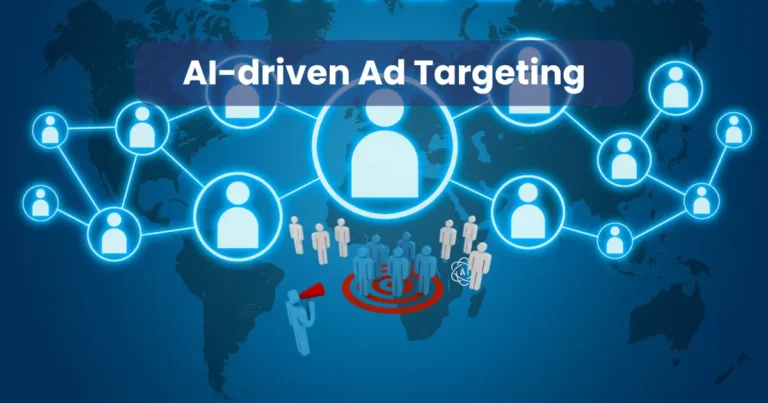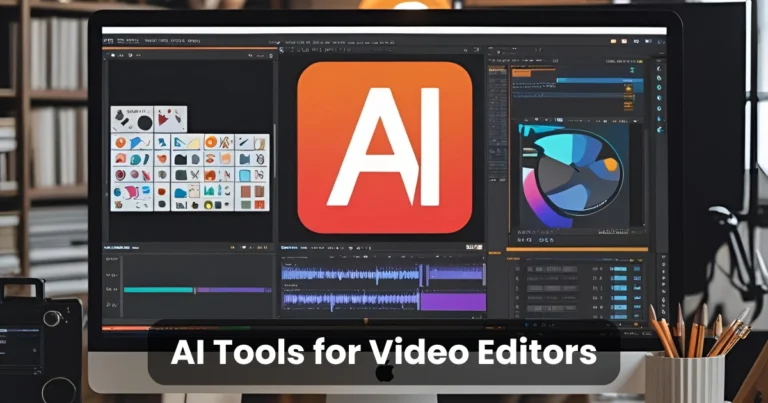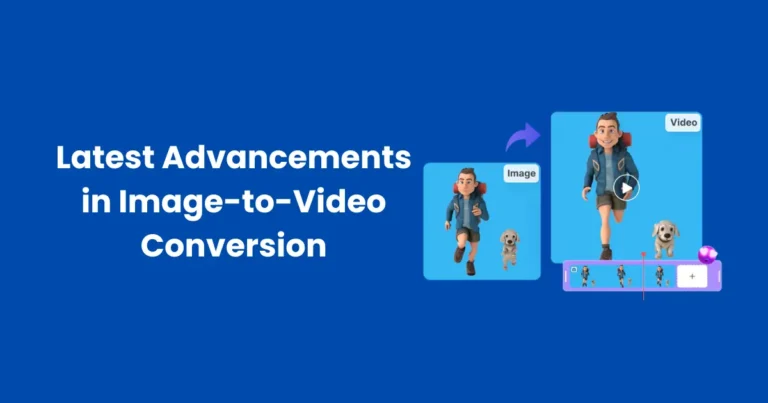Camera Control Scripting Languages: A Complete Guide

Contents
- 1 Key Features of Camera Control Scripting Languages
- 2 Popular Camera Control Scripting Languages
- 3 How Camera Control Scripting Languages Work
- 4 Applications of Camera Control Scripting Languages
- 4.1 1. Film Production and Cinematography
- 4.2 2. Game Development and Virtual Reality (VR)
- 4.3 3. Surveillance and Security Systems
- 4.4 4. Robotics and Autonomous Vehicles
- 4.5 5. Live Streaming and Broadcasting
- 4.6 6. Web Applications and Online Video Conferencing
- 4.7 7. Medical Imaging and Augmented Reality (AR)
- 5 Advantages of Using Camera Control Scripting Languages
- 6 Challenges and Limitations of Camera Control Scripting Languages
- 7 Future Trends in Camera Control Scripting Languages
- 7.1 1. AI-Powered Camera Automation
- 7.2 2. Cloud-Based Camera Scripting
- 7.3 3. Integration with IoT (Internet of Things)
- 7.4 4. Advanced Virtual Reality (VR) and Augmented Reality (AR) Support
- 7.5 5. Real-Time Deep Learning Enhancements
- 7.6 6. Low-Code and No-Code Scripting Solutions
- 7.7 7. Blockchain for Secure Camera Control
- 7.8 Conclusion
Camera control scripting languages play a crucial role in automating and optimizing camera movements across various industries. These specialized languages allow developers to control camera angles, zoom levels, focus, and other parameters dynamically through scripting. Whether in film production, game development, security surveillance, or robotics, camera control scripting languages enhance precision, efficiency, and creative possibilities.
With the rapid advancement of technology, modern applications demand seamless integration of automated camera control. By utilizing scripting languages, professionals can create smooth cinematic shots, automate surveillance systems, and develop immersive gaming experiences. This article explores the key features, popular options, working principles, applications, benefits, challenges, and future trends of camera control scripting languages.
Key Features of Camera Control Scripting Languages
Camera control scripting languages provide a structured way to manipulate camera movements, automate settings, and enhance visual output. These languages offer several powerful features that make them essential for industries such as film production, gaming, surveillance, and robotics.
1. Flexibility and Customization
One of the most significant advantages of camera control scripting languages is their flexibility. Developers can customize camera behavior based on project requirements. Parameters such as movement speed, angle transitions, zoom, and focus can be adjusted dynamically, allowing for precise control over visual elements.
2. Real-Time Adjustments
Many scripting languages enable real-time adjustments, ensuring smooth camera transitions and responses. In game development and live broadcasting, this feature allows cameras to follow objects dynamically, creating an immersive experience for viewers.
3. Automation of Camera Movements
Automation is a core feature of camera control scripting languages. Instead of manually adjusting camera positions, scripts can define specific movement patterns, such as panning, tilting, tracking, and zooming. This automation is widely used in security systems, robotics, and animation.
4. Integration with Other Systems
Most camera control scripting languages support integration with external software and hardware. Cameras can be synchronized with game engines, 3D animation tools, AI-driven analytics, and IoT devices. This interoperability ensures seamless communication between different systems.
5. Command-Based Execution
These languages operate through command-based execution, where specific instructions are written to control camera actions. Developers can program conditional movements, set triggers, and automate sequences, reducing manual effort while enhancing accuracy.
6. Compatibility with Multiple Platforms
Camera control scripting languages are often designed to work across multiple platforms, including Windows, macOS, Linux, and embedded systems. This compatibility ensures that scripts function seamlessly, regardless of the operating environment.
By leveraging these features, professionals in various industries can optimize workflows, enhance creative possibilities, and ensure precise camera control for different applications.
Popular Camera Control Scripting Languages
Several camera control scripting languages are widely used in various industries, including film production, game development, security surveillance, and robotics. These languages offer powerful capabilities for automating camera movements, integrating with software, and enhancing precision. Below are some of the most popular camera control scripting languages.

1. Python for Camera Control
Python is one of the most versatile scripting languages, widely used for camera automation in multiple fields.
- Ease of Use: Python’s simple syntax makes it accessible to beginners and professionals alike.
- Library Support: Libraries such as OpenCV, PySerial, and GPhoto2 enable camera control, image processing, and real-time adjustments.
- Applications: Used in surveillance systems, robotics, film editing automation, and live broadcasting.
2. Lua in Game Development
Lua is a lightweight scripting language commonly integrated into game engines for controlling in-game cameras.
- High Performance: Lua runs efficiently within game engines, ensuring smooth camera transitions.
- Game Engine Integration: Popular engines like Unity (with MoonSharp) and Unreal Engine (via plugins) support Lua for camera scripting.
- Applications: Used in cutscene automation, dynamic camera angles, and real-time tracking in games.
3. JavaScript for Web-Based Applications
JavaScript is a powerful language for controlling cameras in web-based applications.
- Web Compatibility: JavaScript works seamlessly in browsers, allowing developers to control cameras in real-time.
- API Integration: WebRTC and MediaDevices API enable direct access to webcams and remote cameras.
- Applications: Used in online video conferencing, security surveillance dashboards, and interactive web applications.
4. MEL and Python for Maya Camera Scripting
Maya Embedded Language (MEL) and Python are extensively used for camera control in Autodesk Maya, a popular 3D animation software.
- Advanced 3D Camera Control: Scripts can automate complex camera movements for animation and VFX production.
- Motion Path Automation: Camera paths can be predefined for smooth transitions in animated scenes.
- Applications: Used in film production, architectural visualization, and cinematic animations.
5. C++ for High-Performance Camera Systems
C++ is commonly used for developing high-performance camera control systems, particularly in hardware-integrated applications.
- Low-Level Hardware Access: Allows direct communication with cameras for precise control.
- Real-Time Processing: Ideal for robotics, AI-based tracking, and professional film equipment.
- Applications: Used in industrial automation, surveillance systems, and autonomous vehicle cameras.
6. Unreal Engine’s Blueprint and C++ for Camera Control
Unreal Engine provides a visual scripting system called Blueprint, along with C++ support, for handling camera operations in 3D environments.
- Visual Scripting: Blueprint allows users to create camera scripts without coding.
- High Precision: C++ enables real-time camera tracking and advanced cinematic effects.
- Applications: Used in AAA game development, virtual production, and real-time cinematography.
Each of these camera control scripting languages serves a unique purpose, catering to different industries and applications. Choosing the right language depends on the specific requirements of the project, such as automation, real-time control, integration, and performance needs.
How Camera Control Scripting Languages Work
Camera control scripting languages operate by sending programmed commands to cameras, allowing for automated movement, focus adjustments, and integration with external systems. These scripts define how a camera should behave in various environments, whether in film production, gaming, surveillance, or robotics. Below is a breakdown of how these languages function.

1. Command-Based Execution
At the core of camera control scripting languages is command-based execution, where specific instructions direct the camera’s actions.
- Commands such as
move_forward(),rotate_left(), andzoom_in()are commonly used. - Scripts execute in real-time or based on predefined triggers.
- Conditional logic (
if-elsestatements) ensures adaptive camera responses based on external inputs.
2. Automation of Camera Movements
Scripts can automate different types of camera movements, making them useful for game engines, animation software, and surveillance systems.
- Panning & Tilting: Moves the camera left, right, up, or down.
- Zooming: Adjusts focal length dynamically.
- Tracking: Ensures the camera follows an object automatically.
In gaming, Lua or C++ scripts in Unreal Engine automate smooth camera transitions between scenes.
3. Interaction with Hardware and Software
Many camera control scripting languages allow direct interaction with hardware (physical cameras) and software (game engines, animation tools, security systems).
- Hardware Integration:
- C++ and Python scripts communicate with high-performance cameras for real-time tracking.
- GPhoto2 (Python) controls DSLR cameras via USB.
- Software Integration:
- JavaScript (WebRTC API) manages browser-based webcam access.
- MEL (Maya Embedded Language) handles cinematic camera automation in 3D animations.
4. Real-Time Processing and AI Integration
Some advanced camera control scripting languages integrate AI-powered functionalities, allowing cameras to respond intelligently to environmental changes.
- AI-driven facial recognition can automatically adjust focus and framing.
- Real-time object detection enables security cameras to track movement autonomously.
- Machine learning algorithms enhance motion prediction for smoother transitions.
Camera control scripting languages function by executing scripted commands that automate camera operations, enable smooth transitions, and integrate with hardware or software. From real-time motion tracking in security systems to dynamic cinematography in games and films, these languages provide immense flexibility. By leveraging scripting capabilities, professionals can enhance efficiency, precision, and creative control in camera-based applications.
Applications of Camera Control Scripting Languages
Camera control scripting languages are widely used in various industries to automate camera movements, enhance precision, and integrate with other technologies. These languages provide advanced functionality for film production, gaming, surveillance, robotics, and more. Below are some of the key applications:

1. Film Production and Cinematography
Camera control scripting languages play a crucial role in modern filmmaking and animation by enabling automated camera movements, smooth transitions, and real-time adjustments.
- Predefined Camera Paths: Scripts automate tracking shots, zoom effects, and cinematic transitions.
- Integration with CGI: Scripting languages such as Python (Maya, Blender) and MEL (Maya Embedded Language) control virtual cameras in animated movies.
- Motion Capture: Cameras track actors’ movements for seamless integration into CGI environments.
Example:
In animation, Python scripts in Blender automate camera transitions between scenes, ensuring smooth storytelling.
2. Game Development and Virtual Reality (VR)
Camera scripting languages enhance gameplay by dynamically adjusting the player’s perspective and providing immersive experiences in VR environments.
- Dynamic Camera Angles: Lua and C++ scripts in game engines (Unity, Unreal Engine) automate real-time camera movements.
- First-Person and Third-Person Camera Control: Scripting adjusts angles based on player movement and actions.
- VR Head Tracking: JavaScript (WebXR API) enables camera synchronization with head-mounted displays.
Example:
In Unreal Engine, Blueprint scripts dynamically follow the player’s movements, ensuring immersive gameplay.
3. Surveillance and Security Systems
Automated camera control improves security monitoring by enabling real-time tracking and motion detection.
- Object Tracking: AI-powered Python scripts (OpenCV, TensorFlow) detect and follow moving objects.
- Remote Control Cameras: JavaScript and Python scripts enable remote access via web interfaces.
- Automated Alerts: Cameras trigger alerts when detecting unusual activity.
Example:
Python-based AI scripts in security cameras detect intrusions and send real-time alerts to security personnel.
4. Robotics and Autonomous Vehicles
Camera scripting languages are used in robotics for navigation, obstacle detection, and automation.
- Machine Vision: Cameras controlled via Python (OpenCV) analyze surroundings in real-time.
- Autonomous Drones: C++ and Python scripts manage camera angles and tracking for aerial surveillance.
- Self-Driving Cars: AI-based camera control in vehicles detects road signs, pedestrians, and obstacles.
Example:
Self-driving cars use C++ and Python-based scripts to process camera feed and navigate safely.
5. Live Streaming and Broadcasting
Live events and video streaming platforms use scripted camera control to ensure smooth and professional coverage.
- Auto-Focus and Zoom: Python and JavaScript scripts adjust focus based on speaker movement.
- Multi-Camera Switching: Scripts automate transitions between different camera angles.
- Virtual Studio Effects: Scripting integrates augmented reality elements in live broadcasts.
Example:
Python scripts in live streaming software like OBS Studio automate scene transitions and camera switching.
6. Web Applications and Online Video Conferencing
Camera control scripting is essential for web-based applications that involve video streaming and conferencing.
- Browser-Based Camera Access: JavaScript (WebRTC API) controls webcams for online meetings.
- Face Tracking: AI-driven scripts adjust the camera’s angle based on facial recognition.
- Virtual Backgrounds: Scripts enhance video calls with dynamic background removal.
Example:
Google Meet and Zoom use JavaScript-based scripts for real-time webcam adjustments and background effects.
7. Medical Imaging and Augmented Reality (AR)
Camera scripting languages are used in healthcare and augmented reality applications for accurate imaging and interactive experiences.
- Medical Diagnostics: Python scripts process live camera feeds for detecting diseases.
- Surgical Assistance: AI-powered camera tracking enhances robotic-assisted surgeries.
- AR Navigation: Camera scripts in AR applications overlay digital elements onto real-world views.
Example:
Python and C++ scripts in AR surgical tools provide real-time 3D visualization of organs during procedures.
Camera control scripting languages have revolutionized industries by enabling automation, precision, and enhanced interactivity. From filmmaking to robotics, security, and medical applications, scripting ensures efficient and intelligent camera control. As technology advances, the use of camera scripting will continue to expand, offering new possibilities in AI, virtual reality, and automation.
Advantages of Using Camera Control Scripting Languages
Camera control scripting languages offer numerous benefits across various industries, including filmmaking, gaming, surveillance, and robotics. These languages provide automation, flexibility, and precision, making them essential for professionals who rely on camera movements for their work. Below are the key advantages of using camera control scripting languages:

1. Automation of Camera Movements
One of the primary benefits of camera control scripting languages is the ability to automate camera actions.
- Predefined Paths: Scripts allow cameras to follow exact movement paths without manual intervention.
- Timed Transitions: Automated zooming, panning, and tilting enhance smooth scene changes.
- Consistent Shots: Repetitive camera tasks can be executed with precision, reducing human error.
Example:
In game development, Lua scripts automate in-game camera transitions for cinematic effects.
2. Enhanced Precision and Accuracy
Camera control scripting languages ensure highly accurate and precise movements, which is critical for professional use.
- Pixel-Perfect Adjustments: Scripts define exact coordinates and angles for camera positioning.
- Frame-by-Frame Control: Advanced scripting enables micro-adjustments for seamless transitions.
- Elimination of Human Error: Automated scripts ensure repeatable and precise shots.
Example:
In CGI animation, Python scripts in Blender control camera angles with exact precision for rendering complex scenes.
3. Real-Time Adaptability
Scripting languages enable cameras to adapt dynamically based on real-time inputs.
- Object Tracking: AI-powered scripts allow cameras to follow moving objects.
- Light Adjustment: Automated exposure settings optimize image clarity in different lighting conditions.
- Event-Triggered Movements: Cameras react to specific triggers, such as motion or voice commands.
Example:
Python scripts in security cameras detect and track suspicious activity in real time.
4. Integration with AI and Machine Learning
Many camera control scripting languages support AI-driven functionalities for intelligent automation.
- Facial Recognition: AI-powered scripts adjust focus and framing based on detected faces.
- Behavior Prediction: Cameras anticipate movements using machine learning models.
- Automated Image Enhancement: AI improves clarity by reducing noise and adjusting contrast dynamically.
Example:
AI-enhanced security cameras use Python-based scripts with OpenCV for intelligent threat detection.
5. Increased Efficiency and Cost Savings
Using camera control scripting languages reduces operational costs and increases efficiency.
- Reduced Manpower: Automated scripting minimizes the need for manual camera operators.
- Faster Production: In filmmaking and gaming, pre-programmed camera movements speed up production.
- Lower Equipment Wear and Tear: Precise scripting minimizes unnecessary mechanical movements, extending hardware lifespan.
Example:
Automated robotic cameras in news studios use pre-scripted movements to eliminate the need for manual control.
6. Compatibility with Multiple Platforms
Camera scripting languages are designed to integrate seamlessly with different platforms and hardware.
- Game Engines: C++, Lua, and Python scripts control cameras in Unity and Unreal Engine.
- Robotics: Python-based scripts interact with machine vision systems for navigation.
- Web Applications: JavaScript (WebRTC API) enables webcam control for browser-based applications.
Example:
In VR development, JavaScript-based WebXR API synchronizes camera movements with user head tracking.
7. Scalability for Complex Projects
Scripting languages allow users to scale camera control systems based on project complexity.
- Multi-Camera Control: Synchronizing multiple cameras is simplified with scripting.
- Customizable Workflows: Developers can tailor scripts to meet specific project requirements.
- Extensibility: Plugins and APIs allow integration with additional software and tools.
Example:
Film studios use Python scripting in Maya to automate large-scale animation camera movements.
Camera control scripting languages provide automation, precision, and efficiency across various industries. Whether in filmmaking, gaming, security, or robotics, scripted camera control enhances productivity while reducing costs. As AI and machine learning continue to evolve, the future of camera scripting will bring even more intelligent automation and seamless integration.
Challenges and Limitations of Camera Control Scripting Languages
While camera control scripting languages offer automation, precision, and efficiency, they also present certain challenges and limitations. These issues can affect usability, compatibility, and overall performance, especially for beginners or large-scale implementations. Below are the key challenges associated with using camera control scripting languages:
1. Steep Learning Curve
One of the biggest challenges of camera control scripting languages is the need for programming knowledge.
- Coding Expertise Required: Users must understand scripting languages like Python, Lua, C++, or JavaScript.
- Complex Syntax: Some languages require intricate coding, making them difficult for beginners.
- Debugging Issues: Errors in scripts can cause cameras to behave unpredictably, requiring troubleshooting skills.
Example:
A beginner using Python in Blender may struggle to script complex camera movements without prior coding experience.
2. Compatibility and Integration Issues
Not all scripting languages work seamlessly across different camera systems, platforms, and software.
- Hardware Constraints: Some cameras may not support scripting functionalities or require specific firmware.
- Software Limitations: Certain game engines or animation tools may only support specific scripting languages.
- Cross-Platform Challenges: Scripts written for one environment (e.g., Unity) may not function correctly in another (e.g., Unreal Engine).
Example:
A Lua script for controlling cameras in Unity may need significant modifications to work in Unreal Engine.
3. Performance and Processing Overhead
Automated camera scripting can sometimes cause performance issues, especially in resource-intensive applications.
- Increased CPU/GPU Load: Real-time tracking and AI-driven scripting consume processing power.
- Latency Issues: High-frequency script execution may introduce delays in camera movements.
- Memory Usage: Large scripts with complex calculations may slow down systems.
Example:
A real-time surveillance system running AI-powered Python scripts may experience lag due to excessive computational demands.
4. Limited Flexibility in Real-Time Scenarios
Although scripting enables automation, it may lack real-time adaptability in unpredictable environments.
- Predefined Movements Only: Scripted cameras follow pre-set paths and may struggle with unexpected changes.
- Slow Response to Dynamic Events: AI-driven automation can improve responsiveness, but real-time human intervention is sometimes necessary.
- Customization Complexity: Adjusting a script for spontaneous movements requires additional logic and programming.
Example:
A pre-scripted drone camera in an outdoor shoot might struggle to adjust dynamically to sudden wind changes.
5. Debugging and Maintenance Challenges
Managing camera control scripts requires ongoing debugging and maintenance to ensure smooth functionality.
- Error Handling Complexity: Debugging camera movement scripts can be difficult due to various dependencies.
- Frequent Updates Required: Software and hardware updates may require modifications to existing scripts.
- Lack of Standardization: Different cameras and platforms may require separate scripting adjustments.
Example:
A security system using Python scripts for motion detection may require frequent updates as new threats emerge.
6. Security Vulnerabilities
Scripting languages, especially when used in web applications, can pose security risks if not properly managed.
- Unauthorized Access: Poorly secured scripts can be exploited to control cameras remotely.
- Malicious Code Injection: Web-based scripts (JavaScript, WebRTC) may be vulnerable to hacking attempts.
- Data Privacy Concerns: Automated scripts handling sensitive footage must follow strict security protocols.
Example:
A JavaScript-based camera control system for a video conferencing app must prevent unauthorized webcam access.
7. Cost and Resource Investment
Implementing scripted camera control solutions may require significant investment in hardware, software, and skilled personnel.
- High-End Equipment Costs: Advanced automation requires compatible hardware and processing units.
- Developer Expertise Required: Skilled programmers are needed to write, test, and maintain scripts.
- Time-Consuming Implementation: Setting up and optimizing scripts for different use cases can take time.
Example:
A film production company integrating Python-based camera automation in Blender must invest in both software licenses and developer expertise.
While camera control scripting languages offer significant advantages, they also come with challenges such as complexity, compatibility issues, performance concerns, and security risks. Overcoming these limitations requires programming expertise, robust hardware, and continuous script optimization. Despite these hurdles, as technology advances, scripting languages will continue to evolve, making camera automation more accessible and efficient.
Future Trends in Camera Control Scripting Languages
As technology advances, camera control scripting languages are evolving to offer more automation, intelligence, and flexibility. From AI integration to cloud-based solutions, future developments will make scripted camera control more efficient and accessible. Below are some key trends that will shape the future of camera control scripting languages.

1. AI-Powered Camera Automation
Artificial intelligence (AI) and machine learning are transforming the way cameras operate through scripting languages.
- Smart Object Tracking: AI-enhanced scripts allow cameras to follow subjects dynamically without predefined paths.
- Gesture and Voice Control: Cameras can respond to voice commands or hand gestures for hands-free control.
- Automated Scene Adaptation: AI scripts adjust camera angles based on lighting, motion, and subject behavior.
Example:
Python-based AI models in surveillance cameras can detect unusual activities and automatically adjust the camera focus.
2. Cloud-Based Camera Scripting
Cloud computing is enabling remote access and control of cameras through scripting languages.
- Remote Camera Control: Cloud-based scripts allow users to operate cameras from anywhere.
- Real-Time Data Processing: Cloud servers handle complex camera computations, reducing local hardware load.
- Seamless Software Updates: Script modifications and improvements can be deployed instantly across devices.
Example:
A JavaScript-based WebRTC script enables remote webcam control for online meetings via cloud servers.
3. Integration with IoT (Internet of Things)
IoT-connected devices are making camera control scripting more interactive and automated.
- Smart Home Integration: Scripts can link cameras to smart devices like alarms, lights, and locks.
- Sensor-Based Activation: Cameras activate automatically based on motion, sound, or environmental conditions.
- Real-Time Communication: IoT-enabled cameras share data instantly with other smart devices for synchronized actions.
Example:
A Python script in a smart security system turns on cameras when motion sensors detect movement.
4. Advanced Virtual Reality (VR) and Augmented Reality (AR) Support
As VR and AR technologies grow, camera control scripting will become essential for immersive experiences.
- Head-Tracking Cameras: Scripts synchronize camera angles with a user’s head movements for realistic VR experiences.
- 360-Degree Camera Control: Automated scripts adjust perspectives for smooth AR and VR transitions.
- Interactive Environments: Scripts allow users to manipulate in-game or AR camera views dynamically.
Example:
Unity’s C# scripting automates 360-degree cameras in VR environments for a seamless user experience.
5. Real-Time Deep Learning Enhancements
Deep learning algorithms will further improve camera control scripting languages for advanced automation.
- Pose Estimation: AI-based scripts recognize human poses and adjust camera angles accordingly.
- Behavior Prediction: Cameras anticipate movements and adjust in real-time for smoother tracking.
- Automated Background Replacement: Scripts intelligently remove and replace backgrounds without green screens.
Example:
Python-based OpenCV scripts automatically adjust camera focus in sports broadcasting based on player movements.
6. Low-Code and No-Code Scripting Solutions
Simplifying camera control scripting will make it more accessible to non-programmers.
- Drag-and-Drop Interfaces: Users can create complex camera behaviors using visual scripting tools.
- Prebuilt Script Templates: Ready-to-use scripts for common camera actions will become widely available.
- Voice-Assisted Scripting: AI-generated scripts based on voice commands will speed up development.
Example:
Game engines like Unity and Unreal Engine are introducing node-based scripting tools for easier camera control.
7. Blockchain for Secure Camera Control
Blockchain technology may enhance the security and authenticity of camera control scripting.
- Tamper-Proof Camera Logs: Blockchain-based scripts ensure footage authenticity for legal and security purposes.
- Decentralized Access Control: Only authorized users can modify or execute camera scripts.
- Secure Remote Monitoring: Encrypted scripts protect against unauthorized camera access and hacking.
Example:
Surveillance cameras using blockchain-based smart contracts ensure that recorded footage remains unaltered.
The future of camera control scripting languages is driven by AI, cloud computing, IoT, and VR/AR advancements. As scripting tools become more intelligent and accessible, automated camera control will enhance efficiency across industries, from filmmaking to security. With low-code solutions and blockchain security, the next generation of scripting languages will offer more flexibility, automation, and protection.
Conclusion
Camera control scripting languages have revolutionized the way cameras operate in various fields, including filmmaking, gaming, surveillance, and robotics. By automating movements, enhancing precision, and enabling real-time adjustments, these scripting languages offer unmatched flexibility and efficiency.
As technology advances, the integration of AI, cloud computing, IoT, and blockchain is set to redefine camera automation. AI-powered tracking, remote cloud-based scripting, and low-code development tools will make scripted camera control more accessible and intelligent. Despite challenges like a steep learning curve, compatibility issues, and security risks, ongoing innovations continue to improve performance and usability.
Looking ahead, camera control scripting languages will become more intuitive, automated, and secure, paving the way for smarter, more efficient camera systems across multiple industries.






